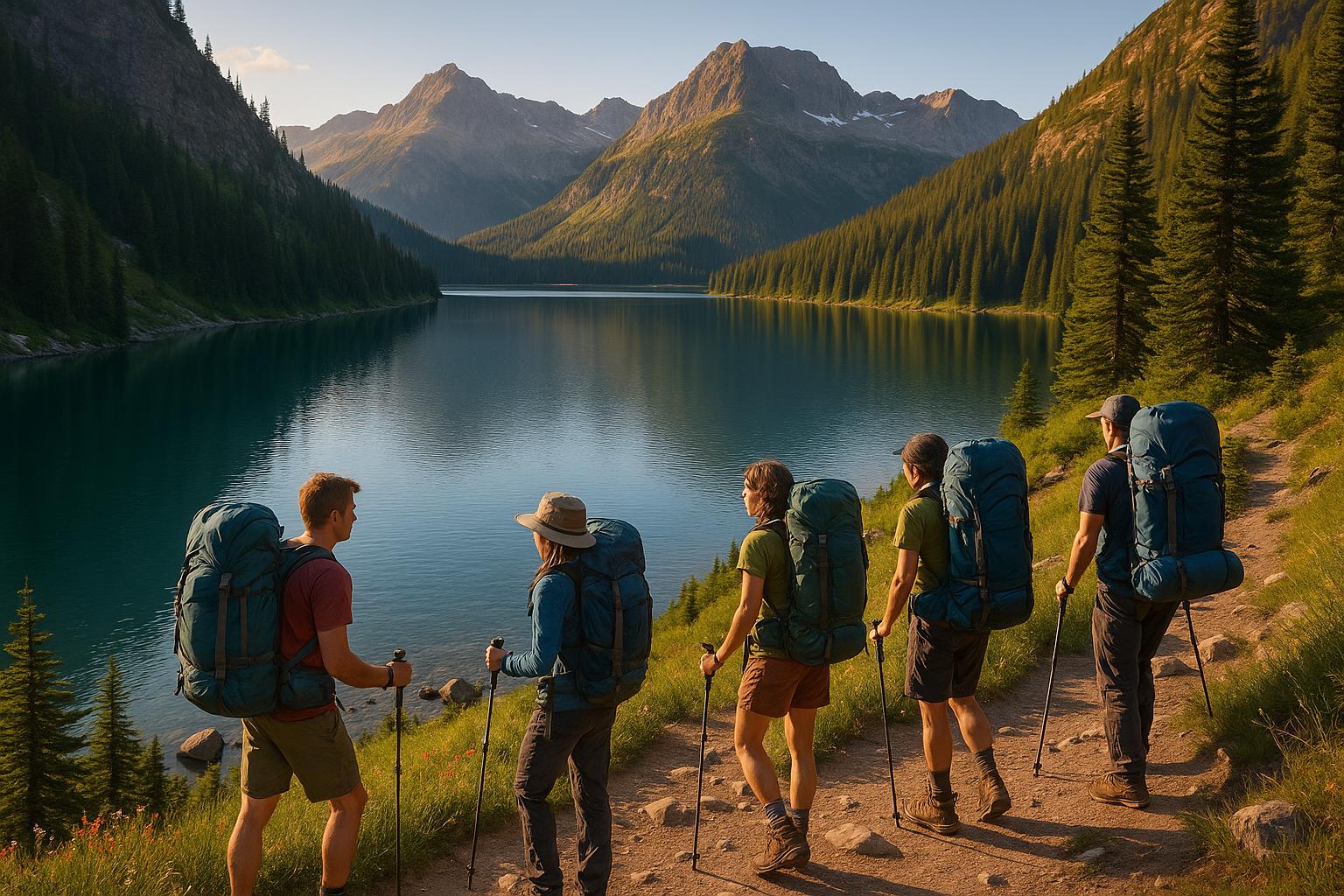Introduction to Multi-Day Hiking Trips Involving Lakes
Multi-day hiking trips present a distinctive opportunity to immerse oneself in the natural environment, offering occasions to experience solitude and engage in sustained physical activities. These excursions provide more than just a passing encounter with nature; they enable a deeper connection with the environment. When such hiking trips are designed around lakes, they become particularly rewarding, as the presence of a lake adds several dimensions in terms of scenery and activity.
Benefits of Including Lakes in Hiking Trips
The inclusion of lakes during multi-day hiking excursions brings multiple advantages. Lakes serve as consistent and reliable water sources, which are crucial for maintaining hydration and fulfilling cooking needs. They offer more than just practicality; lakes provide picturesque settings that enhance the overall camping experience. Their banks often turn into natural campsites, providing convenient, serene places to pitch tents and enjoy peaceful evenings with the soothing presence of water. Moreover, lakes can act as navigational landmarks, aiding hikers in maintaining their orientation while on the trail.
Enhancement of the Hiking Experience
Incorporating lakes into hiking trips significantly enriches the overall experience. Not only do lakes provide a beautiful backdrop for photography or contemplation, but they also offer rejuvenating activities such as fishing, swimming, and even kayaking for those inclined. The combination of water and terrain helps reduce the monotony of long treks, providing varied landscapes and enriching the adventure with opportunities for exploration and reflection.
Popular Trails Featuring Lakes
Among numerous trails that feature stunning lakes as part of their charm, a few stand out for their delicate balance between challenge and visual pleasure. The John Muir Trail in California is one such trail that passes by several high-altitude lakes, offering breathtaking views and serene spots for rest and reflection. The Tour du Mont Blanc in Europe is another exemplary route, where hikers can witness picturesque lake views amidst stunning mountain landscapes. In Canada, the Lake O’Hara Alpine Circuit in Yoho National Park is highly acclaimed, renowned for its crystal-clear waters framed by majestic peaks.
Essential Considerations for Planning
When planning a multi-day hiking trip involving lakes, several important considerations must be addressed. The first is weather conditions, which can dramatically affect the experience, particularly around alpine lakes prone to rapid temperature changes and sudden storms. Proper gear is imperative; hikers are advised to invest in waterproof equipment and clothing to cope with potential weather shifts. Prioritizing safety is vital, which includes understanding the local wildlife and implementing appropriate food storage methods to avoid attracting animals to campsites.
Efficient navigation involves utilizing maps and modern navigation tools like GPS devices or satellite communication gadgets. These tools are essential in ensuring both safety and ease of travel in unfamiliar territories. It is also advisable to have a prepared itinerary, taking into account time allocation for unexpected delays due to weather or other factors.
Technical Preparations and Skills
Apart from physical and logistical aspects, technical preparations and skills enhancement play a significant role in enjoying a lake-centric hiking trip. Hikers should familiarize themselves with techniques for purifying natural water sources to ensure safe drinking water. Practicing basic swimming skills can be beneficial, especially if impromptu swimming opportunities arise. Understanding fishing basics may also add an enjoyable dimension to the trip, allowing hikers to supplement their food reserves and experience local aquatic life firsthand.
Conclusion
Lakes enrich multi-day hiking trips by providing both practical benefits and natural beauty. However, successful integration of lakes into such excursions requires careful planning and awareness of local conditions. Responsible exploration ensures that hikers can enjoy these aquatic landscapes both safely and admirably. With thorough preparation, attention to safety, and a spirit of adventure, these journeys offer unforgettable experiences in some of the world’s most picturesque and serene settings. Such experiences not only satisfy the wanderlust but also foster a sense of respect and conservation for natural habitats.
